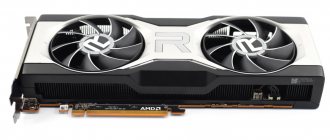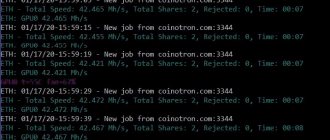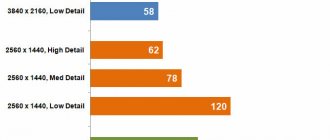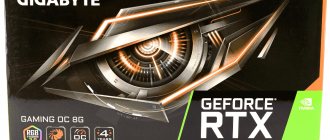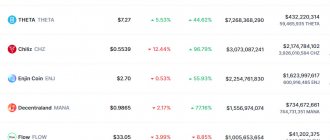Leveraged tokens are innovative assets that can give you the ability to trade in cryptocurrency markets with leverage without having to manage that leverage (leverage is built into the token itself). Most leveraged tokens are ERC-20 tokens issued on the Ethereum blockchain. They were initially introduced on the derivatives exchange FTX, but have since been listed on many other exchanges, including Binance.
20% discount for Binance
The idea is that you can open a leveraged position without worrying about collateral, margin, funding rates or liquidation. However, it should be noted that such assets can lose significant value in a sideways or zigzag market and are generally not intended for long-term investment . Therefore, before exposing yourself to financial risk, make sure you understand the mechanics of such assets.
Margin tokens are stored on the blockchain, hence they provide the same functionality as other blockchain tokens. This means that you can buy, store and transfer them like any other token, while the leverage on the underlying asset continues to work at all times.
For example, consider BULL, a token that represents a 3x long exposure to the price of Bitcoin. If the price of Bitcoin rises by 1%, then BULL rises by 3%. Conversely, if Bitcoin falls by 1%, then the price of BULL falls by 3%.
The opposite of the BULL token is the BEAR token, which represents 3x short exposure to the price of Bitcoin. Thus, if the price of Bitcoin falls by 1%, then the BEAR token rises by 3%, and if Bitcoin rises by 1%, then the BEAR token falls by 3%.
The idea of any margin token is essentially the same, but for different tickers and leverages. Leverage tokens BULL and BEAR are currently available on Binance for BTC, ETH, BNB, XRP and EOS respectively. Each represents a 3x long or short exposure to the underlying crypto asset.
How margin tokens work
Each margin token represents a leveraged position. These tokens can be issued and redeemed through FTX, but can also be traded on other markets like any other ERC-20 token.
Let's say you want to issue $100 ETHBULL, a token that represents a 3x position on ETH. You submit 100 USD to issue the token, and the account representing the token will open a position of 300 USD in the ETH/USD futures market on a perpetual contract. Think of this account as a trading bot that takes care of your leveraged position for you.
So now the account has a long position in the ETH/USD futures market of $300, which is represented by your $100 leveraged tokens.
The same process is applied not only for issue, but also for repurchase. Just as a stablecoin can theoretically be redeemed for the value it represents, leveraged tokens can also be redeemed for the value they represent.
If you want to destroy your $100 ETHBULL tokens, here's what will happen. The account representing the token will close the open position on the ETH/USD perpetual futures market in the amount of 300 USD, and you will receive your 100 USD back. This issuance and redemption mechanism is what should ultimately keep the price of leveraged tokens at certain levels.
Of course, if you just want to trade leveraged tokens, you don't need to worry about the issuance and redemption processes. You can simply buy and sell them like any other token.
In fact, the process of creating and redeeming tokens is only recommended for advanced traders as it can be a bit complicated. However, to use tokens more effectively, it is important to understand how the process works from the inside.
Token sale on Coinlist - Agoric (BLD). Answers to the test (Quiz, questions)
Another sale on Coinlist. You have a great opportunity to suffer in queues with hundreds of thousands of bots and multi-accounts, tinker with all types of captchas and end up getting nothing. And all this is completely free. Well, how can you refuse?
Registration on Coinlist
What is Algoric (BLD)?
Onboarding the next 10 million blockchain developers
Blockchain is the hardest place to scale developers. Agoric is uniquely positioned to reach over 10 million JavaScript developers worldwide by enabling the creation of smart contracts in a strong version of JavaScript. This results in shorter development time, fewer errors, and more efficient development methods.
Open crypto ecosystem
There are two tokens in the Agoric ecosystem: BLD and RUN. Only the BLD token is available for purchase in the CoinList token sale. The BLD staking token secures the network and is used for governance. The RUN token is a stable token used to perform on-chain services (such as gas), implement on-chain smart contracts, and support cross-chain activity. Tokens serve different purposes to prioritize network security and scale the ecosystem.
Rapid development of decentralized applications using smart contract components
Similar to the React and NodeJS frameworks, the Agoric platform and chain enable developers to quickly build and deploy decentralized applications, including DEXs, OTC desks, and NFT marketplaces, using third-party components. Smart contract components are audited, battle tested, and can be quickly imported like any standard npm (node package manager) installation. This saves developers time and resources and prevents re-entry attacks and other common smart contract errors.
Unlocking cross-chain assets
With Agoric's inclusion of the Inter-Blockchain Protocol (IBC), projects can use Agoric smart contracts with built-in cross-chain functionality. This opens the door to cross-chain liquidity, providing users and businesses with scalable commercial opportunities. In collaboration with the Cosmos cross-chain community, the Agoric team supported the development of IBC through the launch.
Algoric (BLD) test answers (Quiz, questions)
- How many people will receive an allocation if everyone purchases at the maximum purchase limit? — Option 1: 36,000; Option 2: 16,250
- What is the sale mechanism for the pSTAKE sale? — Users in the waiting room for the sale will be given a random spot in the queue when the sale starts. Users who arrive after the sale starts for the sale will be placed behind those in the waiting room
- What is the lockup schedule for the tokens? — Option 1: Tokens unlock 6 months after the sale date on / around June 29, 2022, followed by a 12 month linear release. Option 2: Tokens unlock on/around November 1, 2022, followed by a 12 month linear release.
- What currencies are accepted for payment in the sale? — BTC, ETH, USDC, USDT, SOL, ALGO
- What is the price per token and max purchase for the sale? — Option 1: $0.80 per token, $1000 limit. Option 2: $0.65 per token, $1000 limit
- What will happen if someone submits a purchase but doesn't complete it? — The user's purchase may be canceled and the user may be banned from future CoinList sales
- Where will I be able to participate in the token sale? — CoinList.co
- Which is the only Telegram account for official CoinList announcements? — coinlistofficialchannel
- What happens to a user who uses bots or abuses the Queue-It system? — The user's account will be terminated and all purchases will be canceled
Algoric Options (BLD)
There will be two options for participation
Option 1
- Start of sales: December 29, 2022, 18:00 UTC (21:00 Moscow time)
- Coin lock: tokens will be unlocked 6 months after June 29, 2022, then linear unlock for 12 months. Locked tokens can be staked.
- Sales limit: $100-1000 per person
- Total supply: 45,000,000 tokens
- Sale price: 0.8$
- Queue length at maximum entry ($1000): 36,000 people
Option 2
- Start of sales: December 29, 2022, 23:00 UTC (December 30, 02:00 Moscow time)
- Coin lock: tokens will be unlocked around November 1, 2022, then linear unlock for 12 months. Locked tokens can be staked.
- Sales limit: $100-1000 per person
- Total supply: 25,000,000 tokens
- Sale price: $0.65
- Queue length at maximum entry ($1000): 16250 people
Something like this. Let me remind you that in addition to Coinlist, there are a huge number of ways to get to private sales in a variety of projects, and you don’t have to wait a couple of weeks for a new sale on Coinlist and get screwed again. I write about this on my telegram channels: Crypto IDO and Worst Crypto Trader. Also, for those who have a small deposit, I recommend the Crypto Free channel, where you can save money using airdrops, giveaways, and so on. There is also a channel about NFTs, Crypto NFT. I advise you to subscribe to everything or at least read it. The whole crypto movement is happening in a cart, in case you didn’t know.
How does rebalancing work for margin tokens?
Now that we understand how they work, let's talk about how they achieve target collateral levels. Every day, at 00:02:00 UTC, accounts that represent tokens are rebalanced. This means they either buy or sell assets in the futures market to reach their target leverage for that day. So if they make money, they reinvest the profits (purchase) to increase their leverage. If they have lost money, they sell part of their position to reduce their leverage.
In addition, tokens also restore balance if the target leverage is significantly higher than the estimated leverage. For example, if ETH drops 11% in less than a day, ETHBULL will rebalance before the normal rebalance date to prevent liquidation. This means that the risk of liquidation is low, as tokens should automatically rebalance during times of high volatility.
Before we continue, let's reiterate a key detail. Under normal circumstances, tokens rebalance once per day. During times of high volatility, tokens further rebalance to prevent liquidation. This means that the target leverage is achieved since the last rebalance, sometimes earlier than the rebalance scheduled. Thus, leveraged tokens can perform very differently than a simple leveraged position, especially during times of high volatility.
Is there a risk of liquidation for Leveraged Tokens?
Your account in which these tokens are stored cannot be liquidated, but the tokens themselves can. The process of rebalancing that we discussed earlier cannot take into account all scenarios. If the market instantly goes down 50%, then the tokens may not have a chance to rebalance. What does this mean for you as a leveraged token holder?
Your tokens won't disappear, but they may experience extreme price movements. For example, in March 2022, the price of Ethereum fell by about 50% in about 24 hours. During this time, the ETHBULL token lost about 95% of its value.
A sharp drop in the price of ETHBULL tokens in March 2020
As you can see, it is very important for you to understand the risks associated with holding these tokens.
How to start trading with leverage?
A beginner who wants to try his hand at this type of cryptocurrency speculation is recommended to proceed according to the following scheme:
- Learn the theory of margin trading in cryptocurrency. At least the one available in this article. Ideally, you should also study other sources, including sections with FAQ (questions and answers) on exchanges that offer instruments for trading with leverage.
- Choose a trading platform based on its reputation, reviews, list of supported cryptocurrencies, types of orders and trading instruments, available margin multiplier (leverage) options, minimum deposit, etc.
- Familiarize yourself with the rules for providing services by the selected exchange, paying special attention to sections on commission fees, debt payments, conditions for liquidating transactions and other financial issues.
- Buy Bitcoin or any other cryptocurrency that will be used for margin trading, and transfer it to the balance of your account on the exchange.
- For trial transactions, allocate a small part of the deposit (up to 5%) to protect yourself from bankruptcy due to lack of experience.
- When opening the first positions, choose a small leverage, for example, 2x or 3x. In this case, the liquidation level will be relatively far from the entry price, which means the risk of losing funds is not so great.
- Use stop losses based on fixing no more than 20–30% of the loss.
- Trade only those cryptocurrencies whose charts you are familiar with, i.e. with some probability you can predict the further price movement.
- Avoid opening trades during periods of excessive volatility and uncertainty in the market.
- Choose margin trading instead of classical trading if there is a high chance of “catch the wave” of an established trend of growth or decline, during which a reverse price movement is unlikely.
Of course, the recommendations described do not guarantee that your first experience in margin trading will be entirely successful. However, over time, they will help you develop your own strategy with minimal risks and decent profitability.
How to buy margin tokens
You can buy leveraged tokens just like any other token traded on the Binance exchange.
- Login to your Binance account. If you don't have one, sign up and create one in a few minutes.
- Click on “Markets” on the top panel.
- Select “FIAT Markets”.
- Find the leveraged token you want to buy.
- Choose the one you need and trade.
Trading pairs with margin tokens
What is margin crypto trading?
The definition of “margin trading” refers to a type of speculation in the stock or cryptocurrency market, which consists in the use by a trader of borrowed funds provided by the exchange or its users (in rare cases) in his activities.
As in any other situation with obtaining credit loans, the user must provide collateral - in this case, deposit an amount that guarantees the payment of debt obligations according to the rules established by the platform. Own funds allocated for opening such a transaction are margin (hence the name of this type of speculation).
You can also come across the term “leverage trading”, which is an alternative designation for this type of trading due to the presence of leverage (leverage) - a multiplier (1–100x) that increases the user’s deposit available for a transaction using borrowed funds. Thanks to this opportunity, the user can receive a profit that is many times greater than what would be present when speculating exclusively with his own funds.
Benefits of Margin Tokens
Managing the risk of leveraged positions can be challenging. With leveraged tokens, you don't have to worry about margins, collateral, liquidation prices, and funding rates. You can simply buy tokens and do nothing else.
An added benefit is that since these tokens exist on the blockchain, you can move them between exchanges or withdraw them to your own wallet. This makes leveraged tokens one of the few ways to hold leveraged positions and at the same time the assets belong to you, since the private key to the wallet is in your possession.
How margin transactions work
The positions that a user can open on a crypto exchange offering this service are conventionally divided into two types:
- Long (long) - when the user expects an increase in the asset price;
- Short (short) - when a bet is made on a price reduction.
If the price of a cryptocurrency moves in the direction predicted by the trader, the income that he can record on the transaction increases in proportion to the selected leverage. At the time of closing such a position, the body of the collateral is returned to the lender (exchange) along with commission fees, and the rest of the profit received is credited to the user’s account.
For example, if you deposit $1000 into an exchange offering this service and open a long Bitcoin position with a leverage of 10x (1:10), the amount of the open position will be $10,000 (the amount available to the trader has increased tenfold). If the price increases by 1%, the user’s profit will be calculated from the total transaction amount, i.e. will be $100. In total, when closing a position at this moment, the trader’s balance will be $1,100 (minus site commissions and other payments determined by its rules). If there was no leverage, the profit would be only $10.
In addition to commissions for opening/closing transactions, some sites may have so-called funding rates, which holders of long and short transactions pay each other, depending on the number of open positions of each type.
Risks of margin tokens
Margin tokens? Sounds great. So why not always use them instead of futures or margin positions? They are high risk products that are quite experimental.
The main thing to consider is that over the long term, leveraged tokens will perform differently than a simple leveraged position. Due to the rebalancing process we talked about earlier, the target leverage will be reached for each day (or since the last rebalancing), but most likely not in the long term. As mentioned, leveraged tokens are not intended to be held long term. Therefore, it may be worth comparing the historical performance of a leveraged token to simple leveraged positions before engaging in long-term trading.
Typically, leveraged tokens perform more predictably when markets are impulsive, and perform inconsistently when markets are in a consolidation phase. But this can also vary, so it's worth going through the detailed instructions from FTX to understand all the details.
It's also worth noting that these tokens typically trade with less volume and liquidity than conventional margin or futures markets. This is another risk – low liquidity.
Features of Bitcoin margin trading
When choosing Bitcoin as a target asset for leveraged transactions, it is worth remembering that it is the most popular and at the same time the most volatile cryptocurrency available on exchanges that support this type of trading. You simply won’t find a chart more saturated with artificial dumps/pumps than Bitcoin’s.
Of course, there are accidents, but most of these “helicopters” are manipulations that are carried out in order for exchanges to make a profit by liquidating user positions. Therefore, the risks when trading the main cryptocurrency with leverage are particularly high, which should definitely be taken into account.
Otherwise, margin trading in Bitcoin is no different from similar transactions with other assets and may well become a profitable way to earn money, provided that the recommendations described above are followed.
Final Thoughts
The idea of programmable money opened up new possibilities not only for games, digital collections and prediction markets, but also for trading.
Leveraged tokens are a new experiment that makes opening leveraged positions very simple and straightforward. Binance has listed several such assets that can give you a 3x long or short position on selected cryptocurrencies.
If you would like to read more about margined tokens, please refer to the FTX manual or the original English manual.
Our portal is pleased to give you a 20% discount on all future trading operations on the Binance exchange:
20% discount for Binance
To get a maximum 10% discount in the futures section of Binance, enter the Futures Referral Code:
TOP 5 crypto exchanges that support margin trading
For safe and convenient purchase of cryptocurrencies, we have prepared a rating of the most reliable and popular cryptocurrency exchanges that support deposits and withdrawals of funds in rubles, hryvnias, dollars and euros.
The most reliable platform with the highest cash turnover; for several years now, the largest cryptocurrency exchange in the world has been Binance. The Binance platform is the most popular crypto exchange in the CIS, as it has maximum trading volumes and supports transfers in rubles from Visa/MasterCard bank cards and payment systems QIWI, Advcash, Payeer.
Especially for beginners, we have prepared a detailed guide: How to buy Bitcoin on a crypto exchange for rubles?
| # | Cryptocurrency exchange | Official site | Site assessment |
| 1 | Binance (Editor's Choice) | https://binance.com | 9.7 |
| 2 | Huobi | https://huobi.com | 7.5 |
| 3 | Exmo | https://exmo.me | 6.9 |
| 4 | Yobit | https://yobit.net | 6.3 |
| 5 | OKEx | https://okex.com | 6.1 |
The criteria by which the rating is given in our rating of crypto exchanges:
- Reliability of operation
- stable access to all functions of the platform, including uninterrupted trading, deposits and withdrawals of funds, as well as the period of operation on the market and daily trading volume. - Commissions – the amount of commission for trading operations within the platform and withdrawal of assets.
- Reviews and support – we analyze user reviews and the quality of technical support.
- Interface convenience – we evaluate the functionality and intuitiveness of the interface, possible errors and failures when working with the exchange.
- Features of the platform are the presence of additional features - futures, options, staking, etc.
- The final score is the average number of points for all indicators, determines the place in the ranking.

